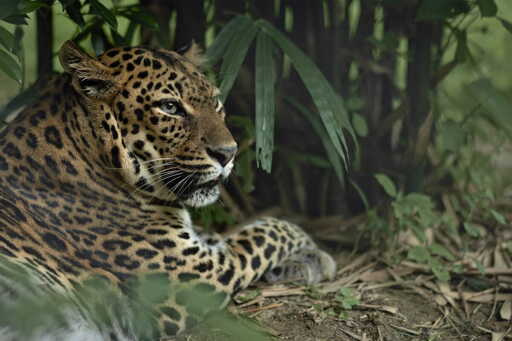PETCHABURI, Thailand — Swaths of butterflies flutter around Chalong Thongsong and his team of rangers and researchers as they walk along a muddy trail into the forest of Kaeng Krachan National Park. The biggest of Thailand’s national parks, Kaeng Krachan is home to more than 450 wild animal species. Arriving at a camera trap chained to a tree, the rangers work quickly: one unlocks the camera cage and removes the memory card, which another plugs into a laptop. A civet, a pack of dholes, and even a family of elephants appear on the screen. At the third camera-trap site, they find what they’re looking for. Gathered around the laptop, they watch, mesmerized, as a leopard strolls along the very footpath they’re now standing on. “We estimate that, within the 1,000-square-kilometer [nearly 400-square-mile] study area, there is a density of around 3-4 leopards per 100 km²,” says Chalong, the park’s technical forestry officer. That works out to about 8-10 leopards per 100 mi2. A leopard caught on a camera trap in Kaeng Krachan National Park. Image courtesy of Kaeng Krachan National Park. A critically endangered subspecies The Indochinese leopard (Panthera pardus delacouri), a subspecies native to the Southeast Asia mainland, is listed as critically endangered on the IUCN Red List. The latest population estimate ranges from 77 to 766 individuals — highlighting both the subspecies’ rarity and the difficulty of studying it. “It is almost impossible to accurately estimate leopard population numbers at a broad scale with any degree of precision,”…This article was originally published on Mongabay
From Conservation news via this RSS feed


